The 10,000 year explosion: Rapid selection pressures in a radically changing environment
An exploration of Cochran and Harpending's thesis
The 10,000 Year Explosion by anthropologists Gregory Cochran and Henry Harpending, two professors at the University of Utah who refer to themselves as “genetic historians”, was released in 2009 to strong reviews.
The book offers an interesting thesis: technological advancement has supercharged Darwinian natural selection1 pressures in humanity, and the microevolutionary genetic changes resulting from the biggest change in human history - the neolithic agricultural revolution - are both ongoing and occurring extremely rapidly by historic norms. These changes are occurring 100x faster than its long-term average over the 6 million years of human existence; if humans had always been evolving this rapidly, the genetic differences between us and chimpanzees would be far larger than it is.
A detailed look at the fossil record, combined with evidence from contemporary examples of natural selection, “makes it clear that natural selection can proceed quite rapidly, and that the past consists of long periods of near-stasis (in populations that were well matched to their environments) interspersed with occasional periods of very rapid change.”
These ongoing genetic changes are making humans more efficient in an environment of sedentary agriculture consumption, which is far different from the hunter-gatherer lifestyle we lived for millions of years. These changes can be studied based on DNA sequencing; many of the studies used data from the International HapMap project.
Genetic changes are naturally selected for based on their adaptive fitness (i.e. procreative and survival adaptive fitness) taking into account factors such as location, weather, culture, diseases and technology in an ongoing dance. Genetic changes influence human culture, economic and social developments, which then affects additional genetic changes.
The authors also offer a unique example of recent rapid natural selection pressures: Ashkenazi Jews during the Middle Ages. According to their theory, the exclusive role that Ashkenazim played as money-lenders to Christian Europe for over a thousand years provided unique and intense selection pressures on their community. These pressures ultimately led to higher average verbal IQs compared to the surrounding populations (who were forbidden by the Church from being money-lenders), along with unusual increases in certain diseases not typically found in other groups. In turn (my addition) these natural selection pressures influence the Rothschilds and their allies’ central bank ownership domination we are experiencing today.
This post will delve into some of Cochran and Harpending’s arguments, framing them in the context of social, economic and political developments in the modern world, as well as briefly touch on the eugenics movement of the early 20th century.
Animal and plant artificial selection
Let’s start with a discussion of artificial selection, which involves humans deliberately breeding other species to emphasize or de-emphasize certain traits. The clearest examples of artificial selection are from animal domestication, where modern animals look and act very different from their wild ancestors yet branched off from their forebears only recently. For example, dogs were domesticated from wolves only between 9,000-34,000 years ago and now come in a wide variety of shapes and sizes.
It is not just physical appearance that has changed. Dog behavior has changed as well, where they are good at reading human voices and gestures while wolves can’t understand us at all. Dog breeds are highly variant, differing greatly in abilities such as learning speed and capacity. For example, the number of repetitions required to learn a new command can vary by factors of ten or more from one breed to another. The typical border collie can learn a new command after 5 repetitions and respond correctly 95% of the time, whereas a basset hound takes 80-100 repetitions to achieve a 25% accuracy rate.
As another example, dog bite accident statistics are stark: biting is disproportionately distributed among breeds. A survey of attacks from 1982-2006 found 1 record of bodily harm attributable to border collies but 1,100 records attributable to pit bulls (in my opinion, “shitpits” should not be legal to own).
Even though 9,000-34,000 years is a remarkably fast evolution by historical standards to evolve dogs from wolves, this timespan can be shortened to within a human lifespan if applied in a rigorous, sustained and targeted manner. Starting in the 1950s Russian scientist Dmitri Belyaev developed a domesticated fox in only forty years. In each generation he selected for tameness and only tameness, although selecting for tameness affected other traits such as coat color, skulls shape, and ear floppiness, in what is known as domestication syndrome. Presumably if you selected for another trait or traits - aggression, dominance, intelligence, creativity, sensitivity or whatever - those would also affect the animal’s physiognomy.
The details of the experiment are fascinating, per Wikipedia:
From the beginning, Belyayev chose foxes solely for tameness, allowing only a tiny percentage of male offspring, and a slightly larger percentage of females, to breed. The foxes were not trained, in order to ensure that their tameness was a result of genetic selection and not of environmental influences. For the same reason, they spent most of their lives in cages and were permitted only brief encounters with human beings.
Belyayev set down strict guidelines for the breeding program. Goldman said, "Starting at one month of age, and continuing every month throughout infancy, the foxes were tested for their reactions to an experimenter. The experimenter would attempt to pet and handle the fox while offering it food. In addition, the experimenters noted whether the foxes preferred to spend time with other foxes, or with humans." After the fox had reached sexual maturity at an age of seven to eight months, "they had their final test and assigned an overall tameness score."….
The least domesticated are in Class III; those that allow humans to pet and handle them, but that do not respond to contact with friendliness, are in Class II; the ones that are friendly with humans are in Class I. After only six generations, Belyayev and his team had to add a higher category, Class IE, the "domesticated elite", which "are eager to establish human contact, whimpering to attract attention and sniffing and licking experimenters like dogs. They start displaying this kind of behavior before they are one month old. By the 20th generation 35% were 'elite', and by the 30th generation 70% to 80% of the selected generation was 'elite.'
Once the foxes in each generation had been classified according to the latest research, only the least fearful and least aggressive foxes were selected for breeding. Goldman said, "In each successive generation, less than 20 percent of individuals were allowed to breed". The sole criterion for permitting them to breed was their tolerance of human contact….
Trut wrote in 1999 "that after 40 years of the experiment, and the breeding of 45,000 foxes, a group of animals had emerged that were as tame and as eager to please as a dog." Fitch described the tame foxes as "incredibly endearing". The New York Times wrote that they "were clean and quiet and made excellent house pets, though — being highly active — they preferred a house with a yard to an apartment. They did not like leashes, though they tolerated them.”
You can watch a video of the domesticated foxes below:
Changes in domesticated plants such as corn or maize have also changed remarkably in only 7,000 years. Humans used artificial selection to grow more and better crops, with more resistance to pests or droughts and with other beneficial attributes. Such dramatic changes are common in many varieties of domesticated plants and animals. Evolutionary genetics predicts that substantial change in almost any trait is possible in a few tens of generations.
Humans evolve quickly as well
Cochran and Harpending liken the rapidity of animal changes over successive generations to that of humans:
Biological processes that were once tightly regulated can be turned on all the time, as with lactose tolerance; turned off entirely, as with the caspase 12 gene, which increases the risk of sepsis when intact and which is inactivated in most populations; or turned off selectively, as with the Duffy mutation, a malaria defense that keeps a certain receptor molecule from being expressed on red cells while continuing to be expressed everywhere else. Some other changes are more like turning up the volume (sometimes all the way to eleven), as in some groups that have extra copies of the gene producing amylase, an enzyme present in saliva that aids in digesting starch….
We expect that differences between human ethnic groups are qualitatively similar to those between dog breeds - that the differences are evolutionary shallow, mostly involving loss of function, exaggerations of already-existing adaptations, neoteny, and so on [i.e. microevolution]. Although such changes cannot generate truly complex adaptations, changes in all those hundreds or thousands of genetic switches and knobs can still cause the sorts of evolutionary changes we see in dogs and other domesticated species; and these differences - such as those between Great Danes and Chihuahuas, or between teosinte and modern maize - are not so small. In other words, very significant evolutionary changes in response to agriculture were still possible….
Because the authors believe that all humans have a common ancestry within 100,000 years, and all humans outside of Africa have even more recent common ancestry (~50,000 years), “observable differences between populations must have evolved rapidly, which can only have happened if the alleles (gene variants) underlying those differences had strong selective advantages.
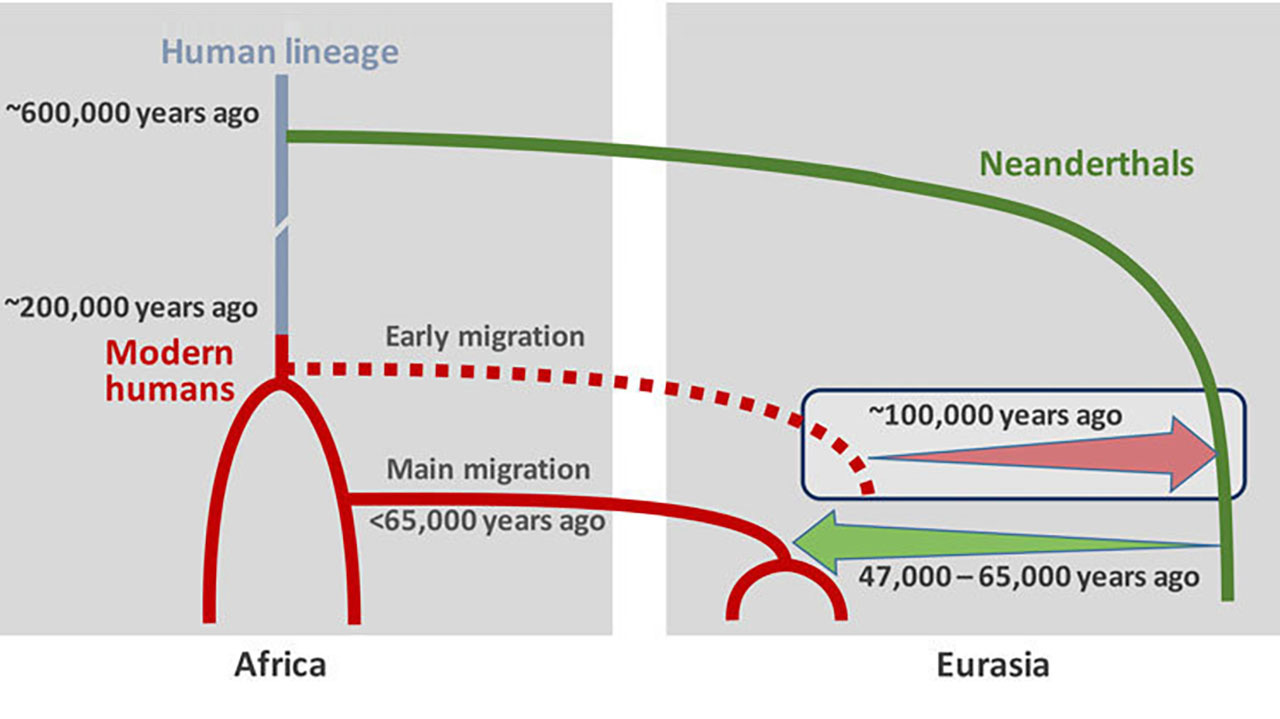
The alleles that are regional, those underlying the differences between populations, must also have had important effects on fitness. That’s what population genetics implies, and genomic information now confirms it.” Random mutations that end up conferring reproductive and reproductive survival advantages to their unique environments end up spreading among that population group, and they can do so relatively quickly depending on how large the advantage is:
…if a favorable mutation occurs on a chromosome, people with that mutation will have more children survive than average, so over time, more and more people will bear that mutation. If the advantage is large enough, the mutation can rapidly become common, before recombination completely reshuffles its original haplotype, rapidly enough that people bearing that mutation will also carry the original local haplotype that surrounded it when it first came into existence.
The mutation can affect many different things - skin color, metabolism, defense against infectious disease, central nervous system features, and any number of other traits and functions - and every major innovation in human history led to new selective pressures, which in turn leads to more evolutionary change.2 And all of these were dramatically impacted by the neolithic agricultural revolution.
Agricultural humans vs hunter gatherer humans
Modern humans had been hunter gatherers for almost all of their 300,000-500,000 year history, which suddenly changed when the last ice age receded about 11,700 years ago. The authors hypothesized that mating between humans and neanderthals may have created physiological and mental changes in humans - perhaps the introduction of new sophisticated language abilities - that led to this and many other innovations.3
Farming produces between 10-100x more calories per acre than foraging, and as a result from 10,000 BC to AD 1 the world population increased by roughly 100x:
However, “the quality of the food was much worse than among hunter-gatherers, and the standard of living did not increase because population growth easily caught up with improvements in food production [Malthusianism]. Additionally higher population density, permanent settlements, and close association with domestic animals greatly increased the prevalence of infectious disease.” The carbohydrate portion of the human diet tripled, while the amount of protein tanked. Therefore:
There is every reason to think that early farmers developed serious health problems from this low protein, vitamin-short, high-carbohydrate diet. Infant mortality increased, and the poor diet was likely one of the causes. You can see the mismatch between the genes and the environment in the skeletal evidence. Humans who adopted agriculture shrank: Average height dropped by almost five inches.
There is numerous signs of pathology in the bones of early agriculturalists. In the Americas, the introduction of maize led to widespread tooth decay and anemia due to iron deficiency, since maize is low in bioavailable iron. This story is not new: Many researchers have written about the health problems stemming from the advent of agriculture. Our point is that, over millennia, populations responded to these new pressures. People who had genetic variants that helped them deal with the new diet had more surviving children, and those variants spread: Farmers began to adapt to an agricultural diet. Humanity changed.
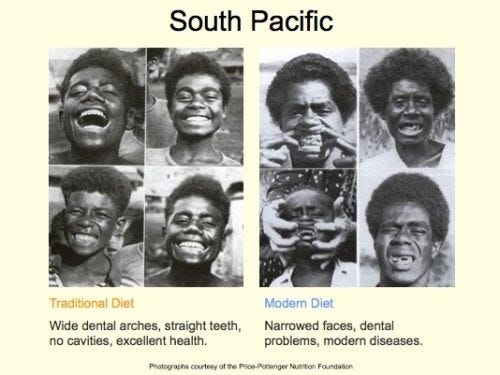
The advent of agriculture has led to many rapid changes in the human population, which are ongoing:
Skeletal and muscular structure - The human skeleton has become more lightly built, our jaws have shrunk, our bones lighter, brow ridges have disappeared, and skull volume has decreased about 10% from 20,000 years ago. There may be direct trade-offs between muscle and brain function — hunter gatherers likely had stronger muscles than today.
Higher rates of elite reproduction - Agriculture also led to the creation of nonproductive elites due to excess food production, which was impossible under hunter-gatherers. This in turn greatly increased inequality. The fraction of men fathering the next generation was markedly higher as hunter-gatherers than in agricultural societies, for example. “Gregory Clark, in A Farewell to Alms, shows that in medieval England the richest members of society had approximately twice the number of surviving offspring as the poorest. The bottom of society did not reproduce itself, with the result that, after a millennium or so, nearly everyone was descended from the wealthy classes.” And those living in rural areas, like today, had many more children than those living in urban areas, which are known as “IQ shredders”.
Lactose tolerance - One of the important genetic adaptations that occurred after the introduction of agriculture and the domestication of cattle was a mutation 8,000 years ago that allowed adults to digest lactose, the main sugar in milk. This increased the efficiency of an agriculture diet by offering a consistent source of protein that those on this diet were otherwise deficient in. Dairying is much more efficient than raising cattle for slaughter: it produces about 5x more calories per acre. These pastoral communities could migrate and bring their cattle with them, compared to static agriculture societies, and raise a larger number of warriors, who were also taller and stronger. Cochran and Harpending theorize that the mobility afforded to the proto-Indo-Europeans by their lactose tolerance was a huge advantage that allowed them to spread over western Eurasia around 7,000 BC (the Kurgan hypothesis).
Skin changes to increase Vitamin D absorption - Humans on an agricultural diet suffered from Vitamin D deficiency which hunter gatherers did not; there is plenty of vitamin D in fresh meat. Such deficiency “would have been serious since it could lead to bone malformations, decreased resistance to infectious diseases, and cancer. This may be why natural selection favored mutations causing light skin, which allowed for adequate vitamin D synthesis in regions with little ultraviolet radiation.” Several major mutations causing light skin color appear to have originated after the advent of agriculture.
Resistance to diseases - Infectious diseases spread in agricultural communities due to crowding (such as measles), garbage, contaminated food and water supplies, and new vermin such as rats and mice, which spread diseases such as typhus and plague. Infectious diseases among sedentary populations were devastating, and therefore farmers experienced strong selective pressures to adapt. Over time these communities dramatically improved their immune systems to resist these diseases, while hunter gatherers did not.
One example of this is falciparum malaria which was especially prevalent in Africa. Africans developed sickle cells as an expensive malaria defense (expensive because it provides defenses with serious side effects). Europeans were not able to invade and conquer the heart of Africa because of these powerful tropical diseases, which Africans had resistance to and Europeans did not, until the 1800s when quinine became widely available.
Another example is the American Indians exposure to Europeans in the New World: the Indians were hunter-gatherers and had no immunity to the diseases Europeans carried such as smallpox, measles, diphtheria, whooping cough, leprosy and bubonic plague, along with other diseases in tropical and subtropical areas such as yellow fever, dengue fever, falciparum malaria, lymphatic filariasis, schistosomiasis, and onchocerciasis. These diseases were all basically one-sided; relatively few pathogens went the other way, such as Syphilis. These diseases, especially smallpox, ultimately wiped out an estimated 90% of the indigenous population within a few centuries. This is the primary reason why Cortes and Pizarro were able to conquer the Aztecs and Inca with so few men. This happened in America, too, although the settler’s awful and deliberate wiping out to almost complete extinction of the Indian’s food source, the buffalo, certainly didn’t help, from an initial population of roughly fifty million to almost zero:
European diseases also decimated Australia Aborigines and Polynesians. However, other countries conquered by the Europeans, such as the Philippines, India or Indonesia, did not see population collapses because they already had extensive contact with Old World populations and so their immune systems were built up to resist such diseases.
Domestication - Elites in agricultural communities wanted a docile population that could be taxed and controlled. Aggressive, combative people had reduced reproductive fitness under their control (as they would be incarcerated or executed), so selection pressures over time resulted in less aggressive people. “Since the elites were in a very real sense raising peasants, just as peasants raised cows, there must have been a tendency for them to cull individuals who were more aggressive than average, which over time would have changed the frequencies of those alleles that induced such aggressiveness ….selection for submission to authority sounds unnervingly like domestication.”

Hunter gatherers were much less likely to “endure the yoke” of slavery, as was said of Indians captured by the Puritans in the Pequot War of 1636 This is a point that Ted Kaczynski emphasizes strongly in his writing as well: technological society selects for those population traits that more smoothly integrate into it, and “mental illness” is defined to a large extent by those personality traits that make smooth participation in civic society difficult.4
Delayed gratification and increased planning - Agricultural societies over time selected for those who possessed long-term planning abilities, given crops needed to be stored for reserves and a portion kept for re-planting. Reproductive fitness favored patience and self-control, a hard-work ethic, as well as selfishness due to private ownership of goods and private property. These traits were unnecessary in hunter-gatherer societies.
The earlier that a group was exposed to agriculture, the more adapted they became compared to late-comers; better adjusted to the diet, tougher against the new diseases, and better at tolerating crowding and hierarchy.
An example of accelerated natural selection: Ashkenazi Jews
Given that a variety of dogs possessing a huge variety of differing traits descended from wolves in less than 35,000 years, that humanity is rapidly changing due to the effects of the neolithic agricultural revolution, and that intense artificial selection can change the traits of a species within a human lifetime per Belyaev’s foxes, how rapidly can a human population change due to intense and sustained natural selection pressures?
According to Cochran and Harpending, a study of the Ashkenazi Jewish population during the Middle Ages can assist with answering this question. This group faced unusual and intense natural selection pressures which led to their population possessing both increased average verbal IQs as well as the prevalence of unusual diseases not commonly seen in other populations. They argue:
If a high-fertility subpopulation was reproductively isolated (or nearly so) for long enough, selective pressures specific to that social niche might cause them to evolve in an unusual direction and become significantly different from the surrounding population. We think this happened among the Ashkenazi Jews…the kind of natural selection that occurred among the Ashkenazim was possible because of the persistence over centuries of strong prohibitions against intermarriage and an odd social niche in which certain traits conferred high fertility. It’s a very unusual case, since few populations appear to have experienced the long-lasting reproductive isolation and unusual job mix required to get those results. There are all sorts of ways in which that process could have been interrupted; it’s being interrupted now, for example, through high rates of intermarriage between Jews and non-Jews and by changes in fertility patterns.
Ashkenazis have the highest measurable IQ of any ethnic group, averaging around 112-115 compared to the European norm of 100 (although their visuospatial abilities are typically somewhat lower by about half a standard deviation than the European average). This doesn’t mean any particular Ashkenazi is intelligent, just that their group IQ bell curve is shifted rightward, which has a strong impact on the number of individuals out on the far edge of the distribution:
“This fact has social significance, because IQ (as measured by IQ tests or their equivalents, like the GRE or SAT) is the best available predictor of success in academic subjects and many jobs. Jews are just as successful in such jobs as their tested IQ would predict, and they are hugely overrepresented in those jobs and accomplishments with the highest cognitive demands” - 10x greater than their share of the population for scientists, earning more than a quarter of all Nobel science prizes, accounting for about half of 20th century world chess champions, they account for 22% of Ivy League students and are highly overrepresented as CEOs. (They are actually far more overrepresented adjusting for IQ compared to white populations, though, which raises separate questions about tribalism and nepotism5).
This was not the case in ancient times with Sephardic Jewish populations. Surviving writings from Greeks and Romans did not state that the Jews were unusually intelligent:
[Roman] history is irrelevant because the Jews, in those days, were much like other people. Most Jews then were farmers, just like most other people in settled populations, and they must have experienced evolutionary pressures similar to those experienced by other agricultural peoples. They were not intellectually prominent at that time.
They made no contributions to the mathematics and proto-science of the classical era. A fair amount of classical commentary on the Jews has been preserved, and there is no sign that anyone then had the impression that Jews were unusually intelligent. By “no sign,” we mean that there is apparently no single statement to that effect anywhere in preserved classical literature. This is in strong contrast with the classical Greeks, whom everyone thought unusually clever.
They key cultural precondition among the Jews - key, that is, to later events among the Ashkenazim - was a pattern of social organization that required literacy, that strongly discouraged intermarriage, and that could propagate itself over long periods of time with little change. That pattern (Rabbinical Judaism) had not always existed but gradually emerged in the centuries after Titus’s destruction of the Temple in the first revolt against the Roman Empire in AD 70. This happened first in Israel, then later in the Jewish community of Mesopotamia. It coincided with the development of the Talmud, a collection of writings about Jewish law, customs, and history. The Torah and the Talmud are the central documents of rabbinical Judaism.
Literacy, which does not itself require high intelligence, was probably important to the Jews in their shift from a nation to an urban occupational caste during and following the Diaspora, acting as an entree to many urban professions in which they at first had no special biological advantages. The prohibition against intermarriage mattered, because local selection pressures cannot change a population that freely mixes with neighbors. Intermarriage quickly dilutes the effect of beneficial alleles within a population, since the introduction of alleles from outside easily swamps the effects of selection within the group. Rabbinical Judaism’s long-term stability was also key, since natural selection takes many generations to effect large changes.
In addition to higher IQ, Ashkenazi Jews also have an unusual set of serious genetic diseases such as Tay-Sachs, Gaucher’s, familial dysautonomia, and others that are up to 100x more common than in other European populations.
Cochran and Harpending believe that their higher IQ plus predisposition to unusual diseases have a single cause: that higher IQ arose from natural selection for success in white-collar occupations which as a byproduct produced susceptibility to these diseases. The alternative explanation for these odd diseases, the bottleneck hypothesis (i.e. there was only an initial small population which inbred), is likely incorrect because (1) the genetic diseases associated with the Ashkenazim are concentrated on only a few metabolic pathways, not scattered like one would expect to see if the bottleneck hypothesis was accurate; and (2) certain measurable genetic changes that would have been expected to occur if true did not happen.
The authors trace the development of the Ashkenazim in support of their argument:
When they first appear in the historical record [which began as a distinct community 1,200 years ago], the Ashkenazim are long-distance merchants who trade with the Muslim world. This is the beginning of a unique occupational pattern; there were no other European groups - or other Jewish groups, for that matter - who were noted for this. The majority of Jews had already given up agriculture, but the Jews of Islam, although urban, mostly worked in various crafts. The Ashkenazim apparently seldom had such jobs….
When persecution became a serious problem and the security required for long-distance travel no longer existed, the Ashkenazim increasingly specialized in one occupation, finance, left open to them because of the Christian prohibition of usury. The majority of the Ashkenazim seem to have been moneylenders by 1100, and this pattern continued for several centuries. Such occupations (trade and finance) had high IQ demands, and we know of no other population that had such a large faction of cognitively demanding jobs for an extended period….
The Jews in this period were prosperous. Historian H. Ben-Sasson pointed out that “Western Europe suffered virtual famine for many years in the tenth and eleventh centuries, [but] there is no hint or echo of this in the Jewish sources of the region in this period. The city dweller lived at an aristocratic level, as befitted international merchants and honored local financiers.” Their standard of living was that of the lower nobility. The Ashkenazi Jews were thus spared malnutrition and occasional famine. This helped Jewish populations recover from their losses due to persecution; it may have affected selective pressures as well.
The persecutions due to religious hostility and commercial rivalries were quite serious; the First Crusade of 1096 resulted in the deaths of ~25% of the Jewish population in the Rhineland:
Expulsions and persecutions continued unabated throughout the Middle Ages:
Many of the expelled Jews moved east to the Polish-Lithuanian Commonwealth, where they were moneylenders, tax-farmers, toll-farmers, estate managers, and proprietors of mills and taverns. According to the historian B.D. Weinryb, in the middle of the fourteenth century “about 15% of the Jewish population were earners of wages, salaries and fees. The rest were independent owners of business enterprises.” According to Cochran and Harpending,
For 800 to 900 years, from roughly 800 to 1650 or 1700, the great majority of the Ashkenazi Jews had managerial and financial jobs, jobs of high complexity, and were neither farmers nor craftsmen. In this they differed from all other settled peoples of which we have knowledge. In fact, it would have been impossible (back then) for the majority of any territorial ethnic group to have such white-collar jobs, because agricultural productivity would have been too low. 90% of the population had to farm in order to produce enough to feed themselves and a thin crust of rulers, scribes, soldiers, craftsmen, and merchants. Selection for success at white-collar tasks could only have occurred if those scribes and merchants could somehow become an ethnic group, one defined by occupation rather than location.
Ashkenazi Jews who were successful at these high-complexity jobs (including business leaders, prominent rabbis, and community leaders) had many children, and these children were much more likely than the surrounding population to survive until adulthood. The richer Jewish families had more children and the poorer families had fewer children. Compare this to Jews in the Islamic world, who mostly had “dirty”, low status jobs and had much greater competition for white-collar jobs from Greek Christians and Armenians, as well as from Muslims, so their selection pressures were entirely different than the Ashkenazi experienced. As a result the Jews in Islamic lands do not have high average IQ scores, are not overrepresented in cognitively demanding fields, and in Israel Ashkenazi Jews score on average 15-16 points higher on IQ tests than they do.
Repeat these pressures and outcomes for a thousand years, where the Ashkenazi interbred with one another with very little out-group marriage, with the richest and most successful money-changers and other middlemen in intellectually challenging roles having the most children, and over time the average verbal intelligence levels rose and rose and their genetics became more and more distinct. IQ is highly heritable as are other obvious features such as height.
In 1791 Napoleon gave legal equality to European Jews, and his conquests spread that policy over much of Europe. Thereafter Ashkenazis began to emerge as scientists and mathematicians. It is the combination of the exclusive role of Jews as money-lenders in the Christian middle ages along with their much higher average verbal IQs that set the stage for the Rothschilds and their allies’ central bank ownership that owns and rules the world today.
The eugenics movement
The ongoing, rapid natural selection of humanity in light of changing technologies, especially the neolithic agricultural revolution, along with the incredibly fast evolution that can occur from artificial selection was to an extent known in the early 20th century, and the eugenics movement was widely accepted throughout Europe and America. Eugenics proponents encouraged a variety of measures to increase procreation for those considered to have good genetics and to discourage procreation for those considered to have bad genetics. Some high-status proponents included W.B. Yeats, D.H. Lawrence, Trotsky, George Bernard Shaw, Winston Churchill, John Maynard Keynes, R.A. Fisher, Alexander Graham Bell, Theodor Roosevelt, Hellen Keler, Oliver Wendall Holmes Jr., W.E.B. Du Bois, Woodrow Wilson, Clarence Darrow, the list goes on and on…Lee Kuan Yew was also a major proponent of it, encouraging the smartest of society to marry smart spouses and encouraging the poor to be sterilized.

What happened to eugenics? It wasn’t scientifically discredited. Instead, after World War 2 egalitarianism became supercharged in response to Hitler’s failed attempt to transvalue the core values of western civilization and, due to the egalitarian ratchet effect, measures that were previously accepted for society’s benefit were discarded on cloaked religious grounds. Eugenics was one of those discarded policies. Academia is not willing to consider the implications of genetic differences among population groups, no matter how strong the evidence, as
eloquently points out.In the modern era eugenics is still practiced to a limited extent, but not coercively. Genetic testing is regularly used to test for a variety of diseases before and during pregnancy, and a pregnancy can be terminated if major problems are found. CRISPR technologies for gene editing are showing increasing promise. And some people choose their mates to highlight certain traits, whether it be intelligence or athleticism. For example, elite bodybuilder John Brown picked his wife for her athleticism, and they had three sons, two of whom went to play in the NFL (Equanimeous and Amon-Ra St. Brown) and the third college football. If you want your children to exemplify (or to avoid) certain traits, this should be something you should keep in mind as well…
However, other than this there is an extreme (egalitarian caused) dysgenic trend which is in slow-motion imploding all of western civilization, a reverse Flynn effect. In prior generations the upper classes did most of the breeding, but in the modern era the lower classes are breeding much more rapidly. The prevalence of government welfare means that people who cannot otherwise support themselves are procreating; the selection pressures are to the lowest common denominator. Short sightedness and irresponsibility are actively encouraged. This is a disaster for society not even in the long term but in the present. Globohomo encourages this and intends to benefit from it, as they see a low IQ, dysgenic population as much less of a threat to their rule…
Conclusions
The 10,000 Year Explosion proves that humans and animals evolve based upon their own unique natural selection pressures based on technology, culture, location and environment, and therefore groups, like individuals, are unequal in many respects — respects that can’t be legislated away by fiat. Inegalitarianism is central to nature.
The proper role of eugenics is an interesting one and up for debate, especially if the hope is for society to undergo a partial transvaluation of values. Even if society decided to pursue widespread eugenics, which traits would be emphasized and who would make that determination? Who is to say they would be correct and not result in a loss of needed genetic diversity? That would be a lot of power to hand over to an individual, group or organization…and IQ isn’t everything; east Asian nations have the highest average IQs in the world, yet the world clamors to move to white western countries, and many rich east Asians move to America or Canada as soon as they have the money to do so. The quality of life and standards of living in the west are far better, with much higher community trust based on a shared system of values above and beyond base materialism, even though the average white IQ is less than east Asians. You can put a bunch of ultra-high IQ Indians, East Asians and Jews in San Francisco, yet the city is falling apart more than any other in America (and perhaps the world)…
Ultimately, what is clear is that the dysgenic race to the bottom should be avoided; people should not have children if they cannot support them without welfare. Society’s incentive structure for who has children is all wrong. And policies like forceful sterilization of repeat violent criminals, refundable tax credits for those with genetic heritable defects who choose to sterilize themselves, and tax credits for high income couples who have children seem like easy and popular eugenic measures…
As Nietzsche wrote in Twilight of the Idols, p. 76:
Nothing is beautiful, except man alone: all aesthetics rests upon this naïveté, which is its first truth. Let us immediately add the second: nothing is ugly except the degenerating man — and with this the realm of aesthetic judgment is circumscribed. Physiologically, everything ugly weakens and saddens man. It reminds him of decay, danger, impotence; it actually deprives him of strength. One can measure the effect of the ugly with a dynamometer. Wherever man is depressed at all, he senses the proximity of something "ugly." His feeling of power, his will to power, his courage, his pride — all fall with the ugly and rise with the beautiful. In both cases we draw an inference: the premises for it are piled up in the greatest abundance in instinct. The ugly is understood as a sign and symptom of degeneration: whatever reminds us in the least of degeneration causes in us the judgment of "ugly." Every suggestion of exhaustion, of heaviness, of age, of weariness; every kind of lack of freedom, such as cramps, such as paralysis; and above all, the smell, the color, the form of dissolution, of decomposition — even in the ultimate attenuation into a symbol — all evoke the same reaction, the value judgment, "ugly." A hatred is aroused — but whom does man hate then? There is no doubt: the decline of his type. Here he hates out of the deepest instinct of the species; in this hatred there is a shudder, caution, depth, farsightedness — it is the deepest hatred there is. It is because of this that art is deep.
Powerful words.
Lastly, one more thing. Back to the problem of evil.
Charles Darwin wrestled with the problem of evil and the nature of God in the context of natural selection. He could not see the work of an omnipotent deity in all the pain and suffering, such as the ichneumon wasp paralyzing caterpillars as live food for its eggs. Why would God have designed such a creature? This did not turn him into an atheist - he thought God could be the original mover, but has taken a hands off approach thereafter - but rather he came to think of himself as an agnostic.6 The malevolent Demiurge in control of material reality more readily solves this issue…
Darwin’s theory of evolution in “On the Origin of Species” is based on key facts and the inferences drawn from them, which biologist Ernst Mayr summarized as follows:
Every species is fertile enough that if all offspring survived to reproduce, the population would grow (fact).
Despite periodic fluctuations, populations remain roughly the same size (fact).
Resources such as food are limited and are relatively stable over time (fact).
A struggle for survival ensues (inference).
Individuals in a population vary significantly from one another (fact).
Much of this variation is heritable (fact).
Individuals less suited to the environment are less likely to survive and less likely to reproduce; individuals more suited to the environment are more likely to survive and more likely to reproduce and leave their heritable traits to future generations, which produces the process of natural selection (fact).
This slowly effected process results in populations changing to adapt to their environments, and ultimately, these variations accumulate over time to form new species (inference).
According to the authors, people commonly “think that ancestry is something like mixing colors of paint: if you pour in equal amounts of blue and yellow, you’ll get green - and the paint will remain green. If a population were 90% Norwegian and 10% Nigerian, intuition says that nine-to-one mix will remain the case indefinitely. But intuition is wrong: if you placed that mixed population in Africa, certain alleles that were common in Nigerians - alleles that protected against malaria, or that made skin dark and resistant to skin cancer - would become more and more common over many generations. Eventually almost everyone in that population would carry the Nigerian version of those genes….We see this in animals too: white-tailed deer carry a brain worm that is fairly harmless to them but fatal to moose, so white-tailed deer are pretty good at displacing moose populations, and American gray squirrels imported to England carry a virus that they survive but that devastates the native red squirrel population.”
Given humans from Africa had migrated to Europe 50,000 years ago where the Neanderthals were long-situated (they disappeared within 10,000 years), such mating could have led to allele transfer that transferred adaptations to local conditions in Europe such as the ability to tolerate cold weather, resist local diseases, or adjust to big swings in the length of the day over the course of the year. Humans did not develop agriculture anywhere on earth during the Eemian period (the interglacial period of about 125,000 years ago), but they did so at least seven times independently in the Holocene, along with cave paintings, sculpture, jewelry, dramatically improved tools and weapons, and involved trade and exchange from hundreds of miles away. Introgression between species is common; it is ubiquitous among domesticated plants, but also common among animals such as breeding western European bees with African bees and among breeds of cattle.

Kaczynski, Industrial Society and Its Future, 14: “The system does not and cannot exist to satisfy human needs. Instead, it is human behavior that has to be modified to fit the needs of the system. This has nothing to do with the political or social ideology that may pretend to guide the technological system. It is not the fault of capitalism and it is not the fault of socialism. It is the fault of technology, because the system is guided not by ideology but by technical necessity. Of course the system does satisfy many human needs, but generally speaking it does this only to the extend that it is to the advantage of the system to do it. It is the needs of the system that are paramount, not those of the human being. For example, the system provides people with food because the system couldn’t function if everyone starved; it attends to people’s psychological needs whenever it can CONVENIENTLY do so, because it couldn’t function if too many people became depressed or rebellious. But the system, for good, solid, practical reasons, must exert constant pressure on people to mold their behavior to the needs of the system. Too much waste accumulating? The government, the media, the educational system, environmentalists, everyone inundates us with a mass of propaganda about recycling. Need more technical personnel? A chorus of voices exhorts kids to study science. No one stops to ask whether it is inhumane to force adolescents to spend the bulk of their time studying subjects most of them hate. When skilled workers are put out of a job by technical advances and have to undergo “retraining,” no one asks whether it is humiliating for them to be pushed around in this way. It is simply taken for granted that everyone must bow to technical necessity. and for good reason: If human needs were put before technical necessity there would be economic problems, unemployment, shortages or worse. The concept of “mental health” in our society is defined by the extent to which an individual behaves in accord with the needs of the system and does so without showing signs of stress.”
Let’s look at Jewish student representation in higher education at Harvard as an example. In an analysis of Harvard undergrads, Ron Unz concluded that Jews and Asians constituted approximately half of Harvard’s student body, leaving the other half for the remaining 95% of America. Also see here. A 2009 article in the Daily Princetonian (“Choosing the Chosen People”) cited data from Hillel, a Jewish campus organization, that with the exception of Princeton and Dartmouth, on average Jews made up 24% of Ivy League undergrads. On the basis of Richard Lynn’s estimates of Ashkenazi Jewish IQ and correcting for the greater numbers of European whites, and given Jews making up 2% of America and white Christians roughly 55-60% of the population, the ratio of non-Jewish Whites to Jews should be around 7 to 1 (IQ >130) or 4.5 to 1 (IQ > 145). Instead, the ratio of non-Jewish whites to Jews is around 1:1 or less.
Per Kevin MacDonald, Espenshade and Radford show that there is discrimination against poor whites and against non-urban whites—exactly the population groups that are least likely to be Jewish. There is a “a general disregard for improving the admission chances of poor and otherwise disadvantaged whites.” Additionally “when lower-class whites are matched with lower-class blacks and other non-whites the degree of the non-white advantage becomes astronomical: lower-class Asian applicants are seven times as likely to be accepted to the competitive private institutions as similarly qualified whites, lower-class Hispanic applicants eight times as likely, and lower-class blacks ten times as likely. These are enormous differences and reflect the fact that lower-class whites were rarely accepted to the private institutions Espenshade and Radford surveyed. Their diversity-enhancement value was obviously rated very low.” They also found that high school participation in commonly understood white middle America activities dramatically lowered admissions chances: “What Espenshade and Radford found in regard to what they call “career-oriented activities” was truly shocking even to this hardened veteran of the campus ideological and cultural wars. Participation in such Red State activities as high school ROTC, 4-H clubs, or the Future Farmers of America was found to enormously reduce a student’s chances of gaining admission to the competitive private colleges in the NSCE database on an all-other-things-considered basis. The admissions disadvantage was greatest for those in leadership positions in these activities or those winning honors and awards. … Excelling in these activities “is associated with 60 or 65 percent lower odds of admission.”
In a letter to a correspondent at the University of Utrecht in 1873, Darwin expressed agnosticism:
I may say that the impossibility of conceiving that this grand and wondrous universe, with our conscious selves, arose through chance, seems to me the chief argument for the existence of God; but whether this is an argument of real value, I have never been able to decide. I am aware that if we admit a first cause, the mind still craves to know whence it came from and how it arose. Nor can I overlook the difficulty from the immense amount of suffering through the world. I am, also, induced to defer to a certain extent to the judgment of many able men who have fully believed in God; but here again I see how poor an argument this is. The safest conclusion seems to me to be that the whole subject is beyond the scope of man's intellect; but man can do his duty.









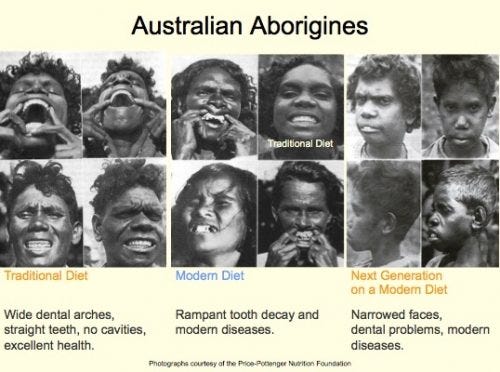
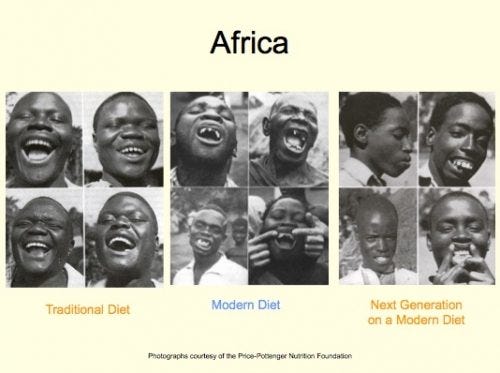
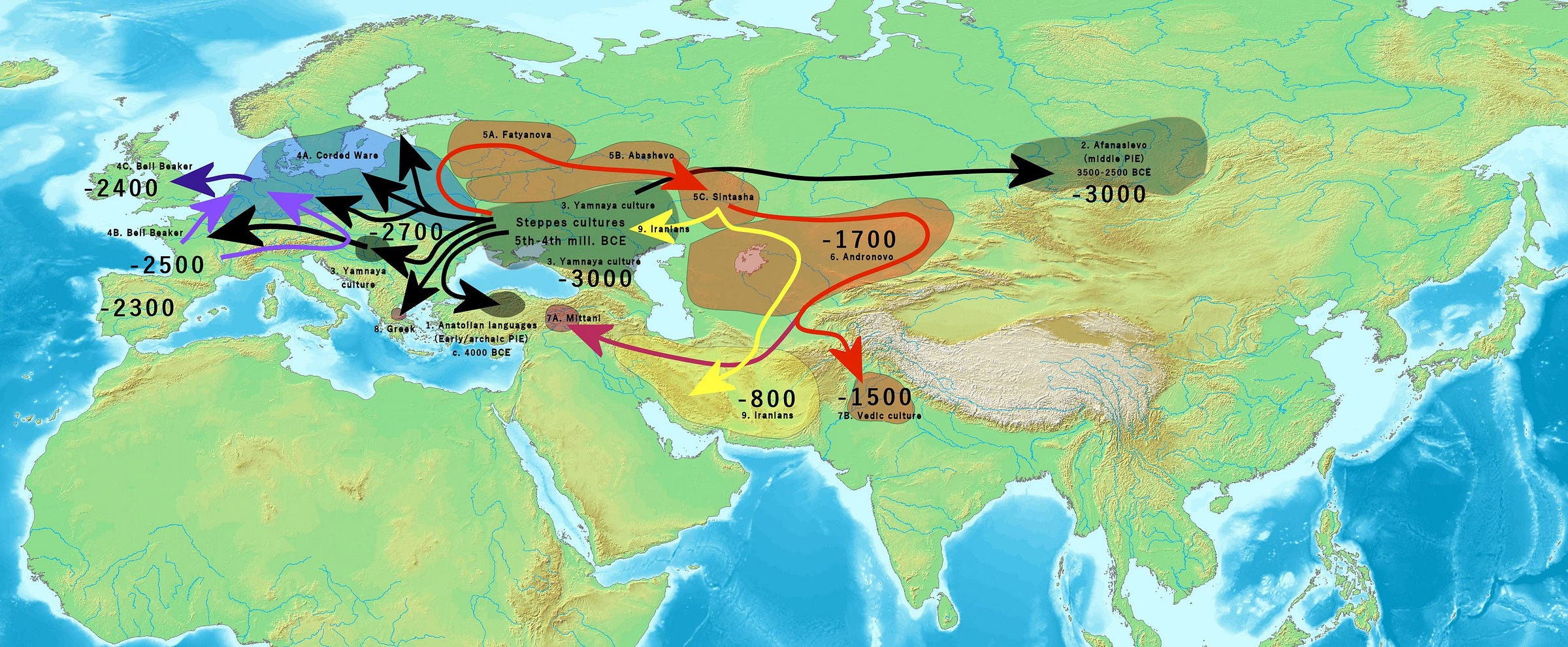
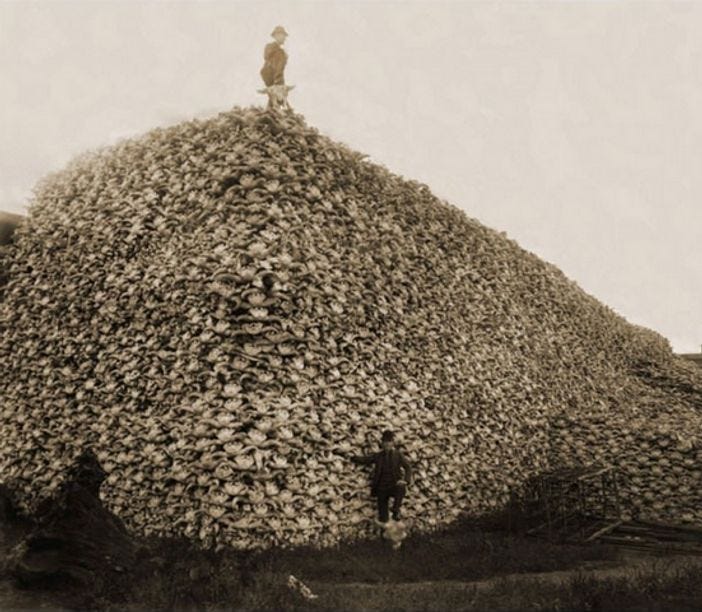





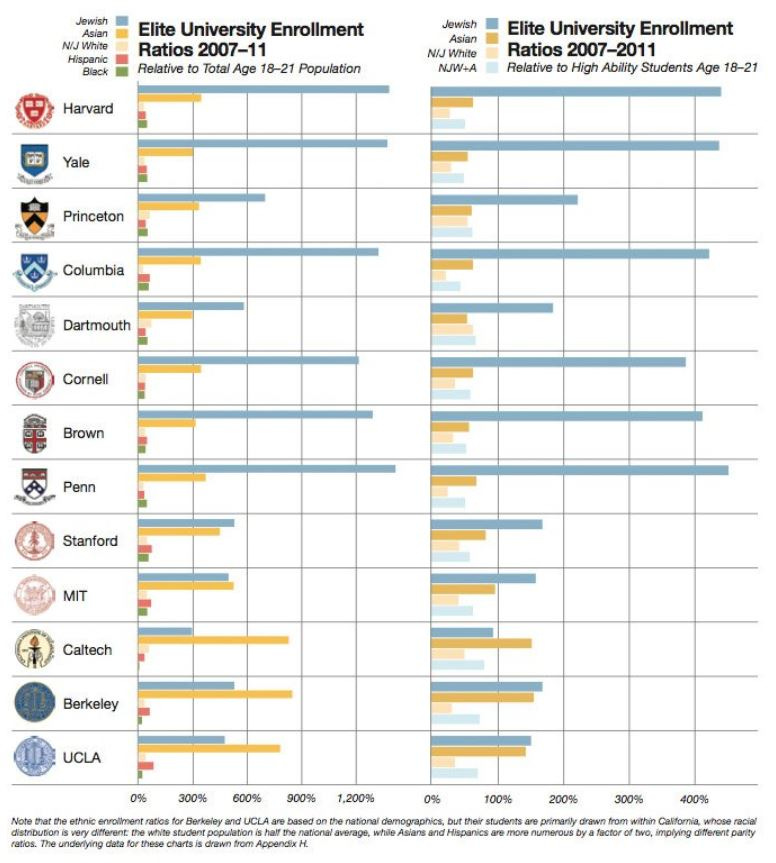
Great article!
About Jews—Vox thinks that they are not so smart. https://voxday.net/2018/04/29/the-myth-of-jewish-intelligence/
Vitamin and iodine nutrition are still so overlooked in modern society. The average doctor receives only 25 hours of nutritional education in entire the course of their studies. Goitre used to be rampant in inland areas of Europe. Some estimate that iodisation has raised IQs by 15 points. https://www.givingwhatwecan.org/blog/are-we-underestimating-benefits-salt-iodization
In Japan, where you can set your watch by the trains, people consume easily ten times as much iodine as other people. https://www.ncbi.nlm.nih.gov/pmc/articles/PMC3204293/
It's interesting to note the enormous increase in height and longevity that people has experienced in the last century, thanks to adequate protein intake (not miso!)
I also remember seeing a Western study from the 1940s or thereabouts in which thiamine was given to orphans on a standard unfortified diet, with noticeable improvements in scholastic ability.
Another great article!
Presumably, you don't find the claims in this article persuasive: https://www.timesofisrael.com/ashkenazi-jews-descend-from-350-people-study-finds/